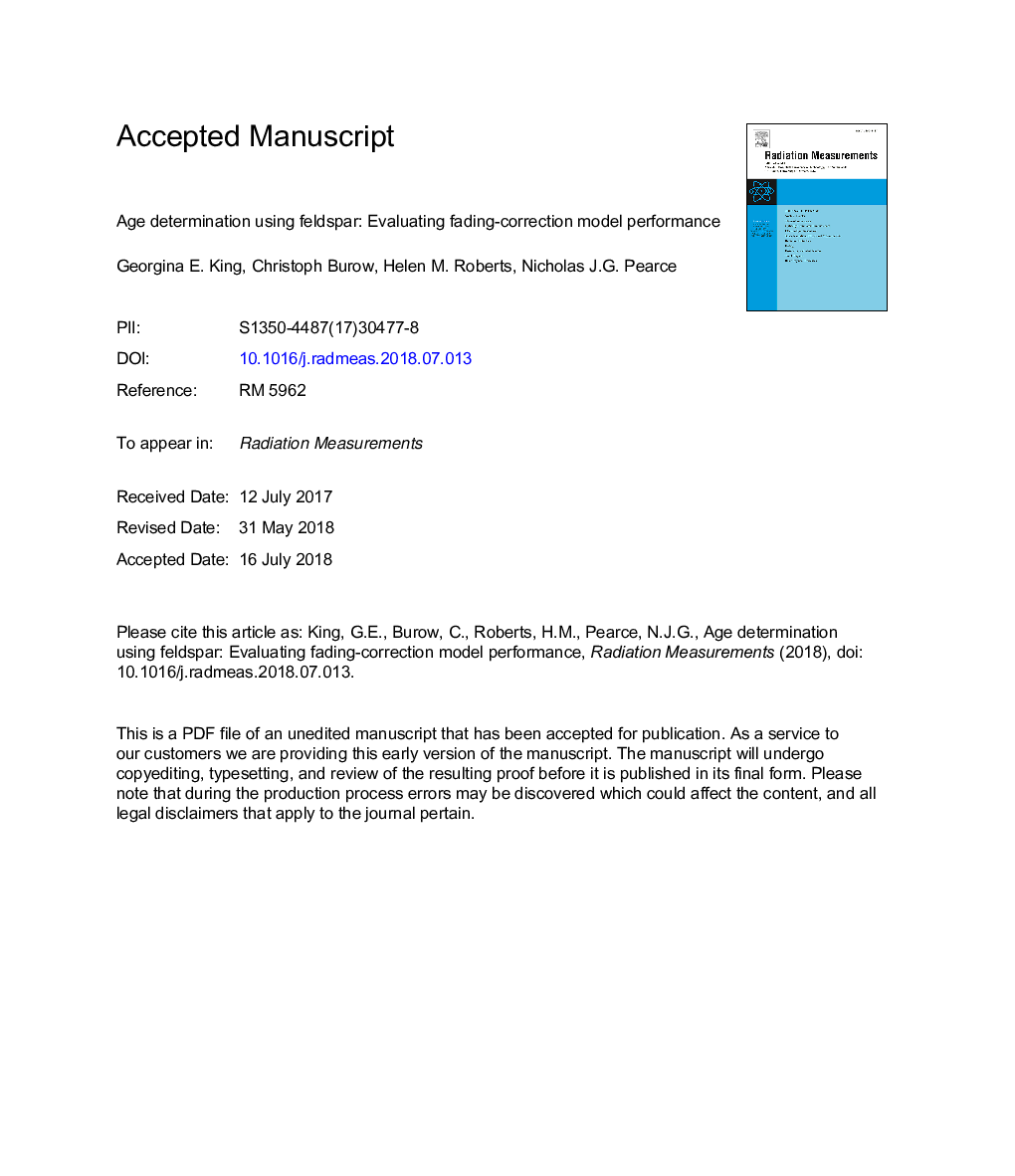| کد مقاله | کد نشریه | سال انتشار | مقاله انگلیسی | نسخه تمام متن |
|---|---|---|---|---|
| 10142861 | 1646114 | 2018 | 35 صفحه PDF | دانلود رایگان |
عنوان انگلیسی مقاله ISI
Age determination using feldspar: Evaluating fading-correction model performance
ترجمه فارسی عنوان
تعیین سن با استفاده از فلدسپات: ارزیابی عملکرد مدل اصلاح محو شدن
دانلود مقاله + سفارش ترجمه
دانلود مقاله ISI انگلیسی
رایگان برای ایرانیان
موضوعات مرتبط
مهندسی و علوم پایه
فیزیک و نجوم
تشعشع
چکیده انگلیسی
The recent introduction of post-IR IRSL measurement protocols has prompted a resurgence in luminescence applications using feldspar, some of which are affected by anomalous fading related signal loss. Many fading-corrected feldspar ages are reported in the literature, however few of those ages have been corrected using the model of Huntley (2006) [Huntley, D.J., 2006. An explanation of the power-law decay of luminescence. Journal of Physics: Condensed Matter 18(4), 1359-1365]. Here we present a new R function that calculates fading-corrected ages using the model of Huntley (2006), implemented with either a single-saturating exponential (1EXP) or general-order kinetic (GOK) fit. We evaluate the performance of the model through (i) contrasting measured and modelled field saturation values for a suite of 41 published saturated samples, and (ii) through using the model to fading-correct feldspar ages of samples with independent age control. Our results indicate that when implemented with 1EXP this model has an accuracy of 10% for predicting sample saturation, but that independent ages may be overestimated when the model is used to fading-correct samples across a range of timescales. In contrast, providing that the dose response curve has been characterised beyond 600â¯Gy, implementing the Huntley (2006) model with a GOK fit yields accurate age estimations. Modelled age overestimation for 1EXP is associated with dose response curve deviation from a single-saturating exponential. Finally we contrast the laboratory measured light levels of a suite of 50 saturated samples with their corresponding fading rates. We show that these saturated samples may yield De values below 2D0, and thus that 2D0 is not an effective screening criterion for sample saturation where no anomalous fading correction is made.
ناشر
Database: Elsevier - ScienceDirect (ساینس دایرکت)
Journal: Radiation Measurements - Volume 119, December 2018, Pages 58-73
Journal: Radiation Measurements - Volume 119, December 2018, Pages 58-73
نویسندگان
Georgina E. King, Christoph Burow, Helen M. Roberts, Nicholas J.G. Pearce,
